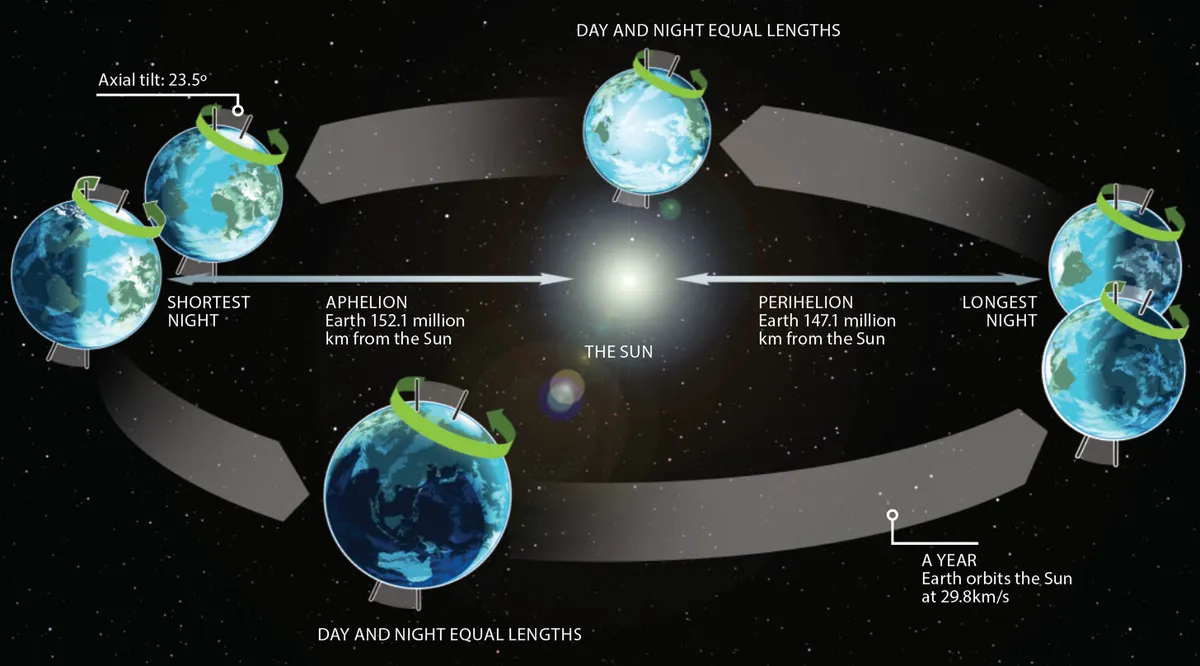February has 28 days clear, but 29 in each leap year. We all know the rhyme! But how many of us fully understand why February gets an extra day every four years?
February has 28 days, unlike any other month in our calendar. But 2024 is a leap year, meaning this year, February will have 29 days.
It's all to do with Earth's orbit around the Sun and the calculations that led to the Gregorian calendar in use today.

Earth's orbit around the Sun
"Leap years play a crucial role in aligning our calendar with the Earth's orbit around the Sun," says Dr Dr Minjae Kim, a Research Fellow from the Department of Physics at the University of Warwick in the UK.
"The orbit, otherwise known as a tropical year, takes about 365.24 days to complete. This is slightly longer than our standard calendar year of 365 days.
"This extra quarter of a day each year may seem insignificant, but over time, it adds up, leading to a noticeable shift in our calendar.
"Without adjusting for this extra time, our calendar would gradually fall out of sync with the astronomical seasons, causing a significant drift over the years.
"To counter this misalignment, the leap year system adds an extra day to the calendar every four years. This adjustment is made by extending February to 29 days.
"This seemingly simple solution of adding a day every four years is refined further in the Gregorian calendar, the most widely used calendar system today."

How leap years came about
To understand the history of leap years and why they were adopted, as is often the case, we have to look back to the Romans.
“In the year 46 BC, Julius Cesar proposed the new Julian Calendar which would add an additional day to the shortest month of the year (February) every four years in an attempt to allow for a predictable correction to the issue of the quarter day drift," says Dr James McCormac, researcher in Warwick's Astrophysics Group.
“However, this was actually a slight overcorrection to the problem. As the solar year was not exactly 365.25 days but was in fact slightly less at 365.2422 solar days, the Julian Calendar and the solar year were now drifting apart again, albeit much more slowly, at a rate of 11.2 minutes per year.
“By the late 1500s this small overcorrection in the Julian calendar had accumulated to a drift of 13 days with respect to the solar year."
Next we must turn to Pope Gregory XIII, the Pontifex Maximus of the Catholic church who in 1582 created the Gregorian calendar, which accounts for the 11.2-minute drift.

This is the calendar used by the UK, Europe, USA and many other countries today.
The Gregorian calendar skips three leap days every 400 years, giving an average year of 365.2425 solar days which is much closer to the solar year of 365.2422 solar days.
“Leap years beautifully illustrate how we have harmonised our constructed concept of time with the natural rhythm of the Universe, maintaining a critical balance between human activities and the Earth's natural cycles," says Dr Kim.
And how can you tell if a year is a leap year? Any year that's divisible by 4 will be a leap year, but new century years must be divisible by 400 (so years 1700, 1800 and 1900 were not leap years).
